

Gaming pc download kit - for
A COMPLETE HOW-TO PC BUILDING GUIDE FOR BEGINNERS
- Introduction to PC Component
- How to Build a PC
- Plan Your PC Build
- FAQ
#YesWeBuild

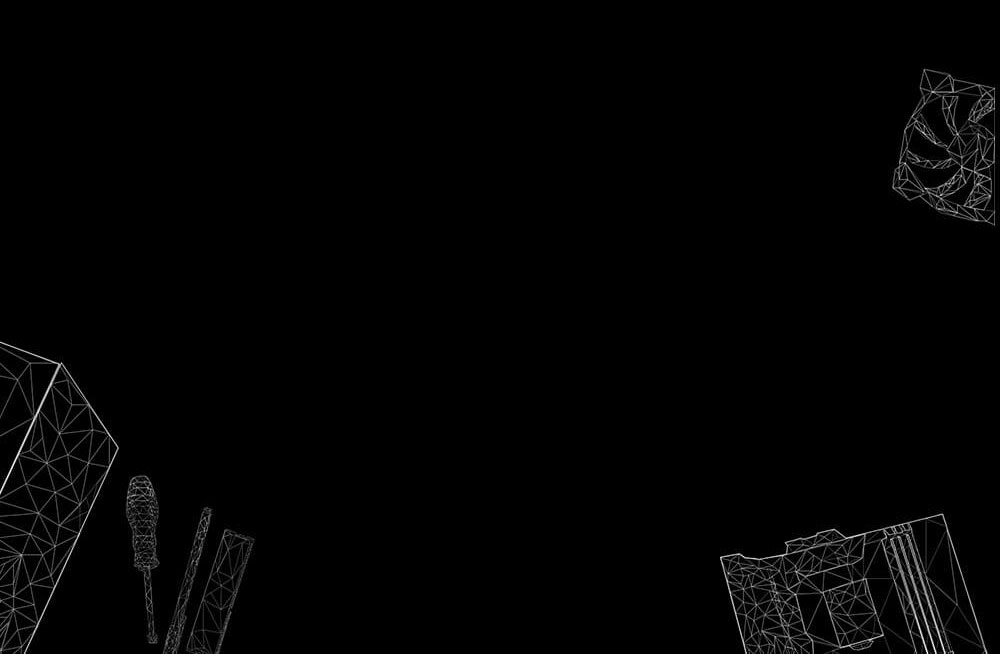
WHY ON EARTH DO WE BUILD OUR OWN PC?
We choose whichever component we want that perfectly fits our needs.
We make the most use of our limited [or unlimited] budget
We can upgrade and maintain our PCs with ease.
In a nutshell…
Build-it-yourself is just simply cooler!
INTRO TO PC COMPONENTS
What do I need to build a pc?
Building a PC is just so fun as building Lego.However, you should know the bricks before building a beast. While the builds can be in various styles and usages,there are indispensable computer parts that come togeher to make a PC work. Come learn the basics of each parts.
FREE EBOOK!
Ever wanted to build your own PC?
Grab offline copy to make your PC building easier!
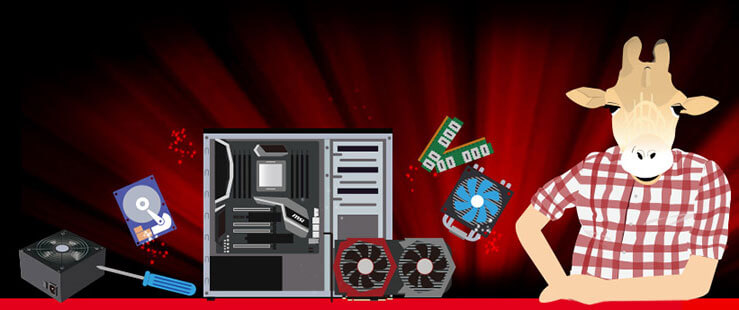
HOW TO BUILD A PC
Step-by-step build guide in 11 steps
Time to get your hands dirty! With hands-on PC building instruciton, even first-time builder can build up a great custom PC. Grab the screwdriver, keep your passion, and you are good to go!
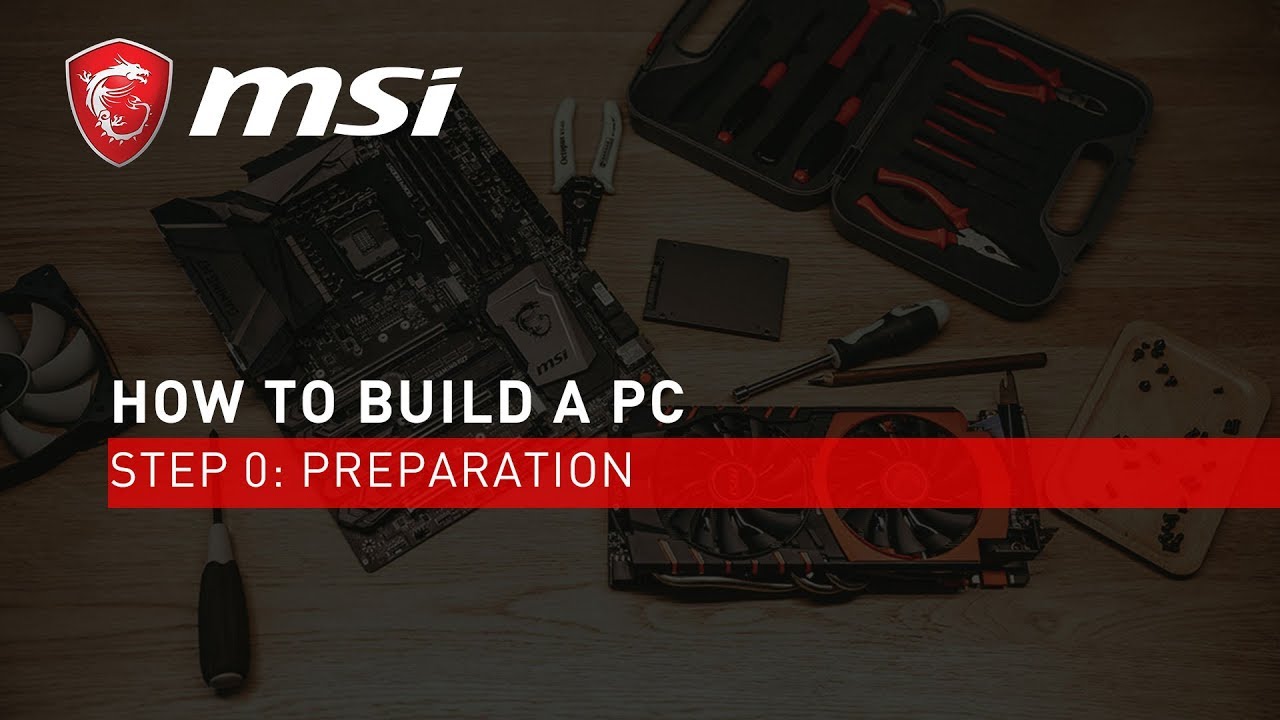
- A magnetic screwdriver.
- Zip ties /velcro strips and a pair of scissors.
- A clean non conductive surface to build your PC onto
- Take a deep breath, read the manuals first and you are good to go!

- Unlatch the lid of the CPU socket
- Line up the notch printed on the CPU with the guiding notches marked on the socket; carefully insert it inside the socket.
- Make sure the CPU is placed properly then resecure the lid and lock it onto the processor.
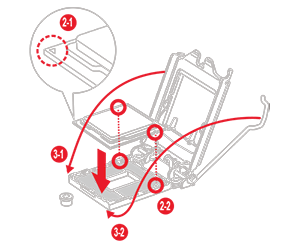
- Pressing down on the lock/ejector tabs that are located at the ends of the memory sockets.
- Check the memory module installation order outlined in the motherboard manual, and make sure which the suggested matching memory slots to insert first.
- Push the modules down until you hear a “click” as the retention clips are pushed upwards and lock the module.


- Move and fasten riser screws on the M.2 standoffs.
- Take your drive and gently insert it into the connector at a 45 degree angle.
- Push it down towards the standoff and secure it with the little screw.
- Mount the back- plate onto the back of the motherboard. (If you have one)
- Apply a drop of thermal paste onto the surface of the processor.
- Connect CPU Fan Cable to CPU Fan Header on the motherboard.
- Lower the cooler vertically and place it onto the CPU. Secure it evenly tightening opposite screws progressively.
Make sure the screws are tightened properly, and the pressure applied at the corners is even to avoid CPU damage and cooling performance degradation.
- Install I/O shield onto the back of the case.
- Take your motherboard and gently lower it at a 45 degree angle into the case.
- Match the mounting holes on the motherboard with the stand-offs in the case.
- Secure the board with each of the supplied screws.
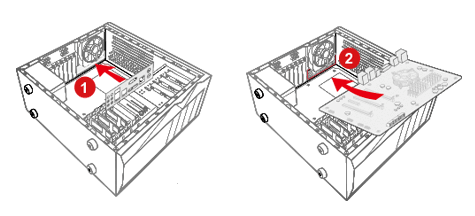
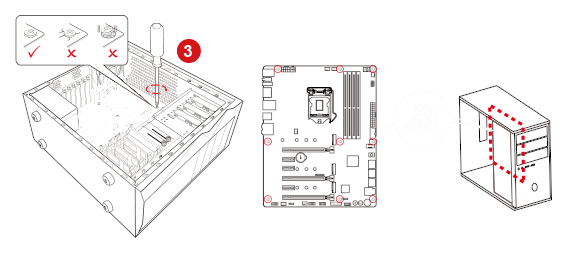
- Remove rear PCI-e bracket from the case.
- Unlock the PCI-e slot by pushing back the small plastic lock located at the rear of the slot.
- Hold the card with two hands, lower the graphics card into the case and install into the PCI-e slot of the motherboard.
- Secure the graphics card with the required screws to the back of the chassis.
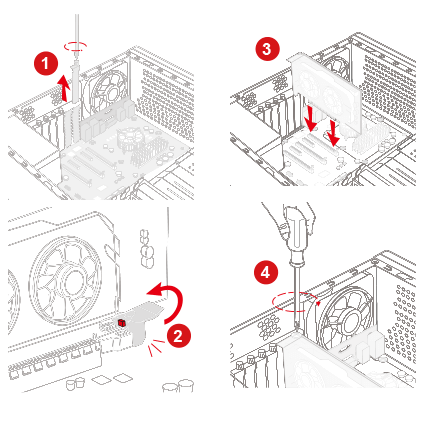
- Connect one end of the SATA cable to the SATA ports on the motherboard, and the other end to the storage devices (2.5’’ inches / 3.5’’ inches) itself.
- Mount the Power Supply (PSU) into the chassis and secure it with all the screws.
- Connect 24-pin power connector into the socket on the motherboard
- Connect 8-pin CPU power connector to motherboard.
- Connect 6+2 Pin PCI-E Cable to graphics card (it may vary by graphics card products)
- Clip in your SATA power connecter to hard drive
- Connect other Molex connectors(with 4 horizontal pins) to extra devices (e.g. DVD/CD Optical Drives).
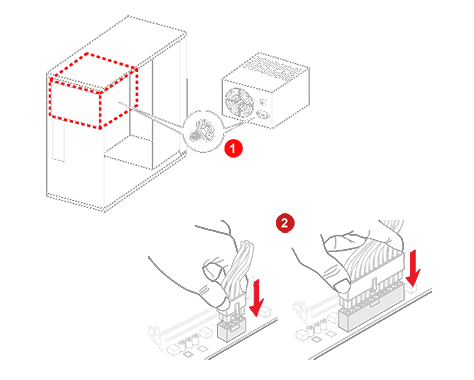
- Connect Power switch / Reset switch / Power LED/ HDD(Hard Drive) LED Cable to motherboard JFP1 Pin header.
- Connect front USB cables to USB pin headers on the motherboard
- USB 3.0 / USB 2.0 Cable to USB 3.0 / USB 2.0 Pin Header.
- Front USB Type-C Cable to Front USBType-C Pin Header
- Connect the Audio(Speaker) Cable to the motherboard JAUD1 Pin header.
- Use zip ties or velcro strips to secure the cables in tight bundles to the back of the case.
- Insert the OS device (CD / USB)
- Follow the OS installation steps
- Download the latest device driver from the website and Install.
The best part of building your own pc is to customize your rig that suits your need. Do you build a PC for intense gaming or for heavy multimedia production? Here are some tips you need to take into consideration when choosing your components.
FAQ
Want to find quick answer?
When you start to understand how PC building work, there must be bunches of questions. You are not alone, we’ve listed some commonly asked questions and organized into several categories.
Hard disk drive (HDD): Inexpensive and offers higher storage capacity, but relatively slow and large in size
Solid state drive (SSD): Lower capacity, medium size, higher price but faster speed.
- CPU
- Motherboard
- Graphics Card
- CPU cooler
- Memory
- Storage Devices (HHD or SSD)
- Power Supply
- Case
- Peripherals (Keyboard, Mouse, Headset)
- Monitor
For details, you can visit: https://www.msi.com/blog/usb-3-1-gen1-gen2-explained
- choose a CPU cooler with corresponding brackets that supports the socket on the motherboard.
- Each CPU cooler supports a different thermal design power (TDP), indicating the upper range of heat output that it can handle. More powerful CPUs need better coolers to ensure stable operation.
- Choose a cooler that fits your case. Powerful coolers often have large heat sinks, so it is important to choose a cooler that can fit into your case without obstructing other components.
- Step 0: Prepare screwdriver and
- Step 1: Install a CPU
- Step 2: Install memory (DIMM)
- Step 3: Install M.2 drive
- Step 4: Install CPU cooler
- Step 5: Install motherboard
- Step 6: Install graphics card
- Step 7: Install storage device
- Step 8: Install power supply unit
- Step 9: Front panel connection
- Step 10: Cable management
- Step 11: Install operating system and drive
- Press down on the ejector tabs that are located at the ends of the memory sockets.
- Check the memory module installation order outlined in the motherboard manual, and make sure which the suggested matching memory slots to insert first.
- Push the modules down until you hear a “click” as the retention clips are pushed upwards and lock the module.
- Check the definition of pin headers on the purchased RGB accessory and the motherboard (for example, 12V/5V)
- Plug the 4-pin (3-pin) RGB connector to the RGB header on the motherboard
- Plug the power connectors additionally when connecting an RGB accessory if necessary

-
-